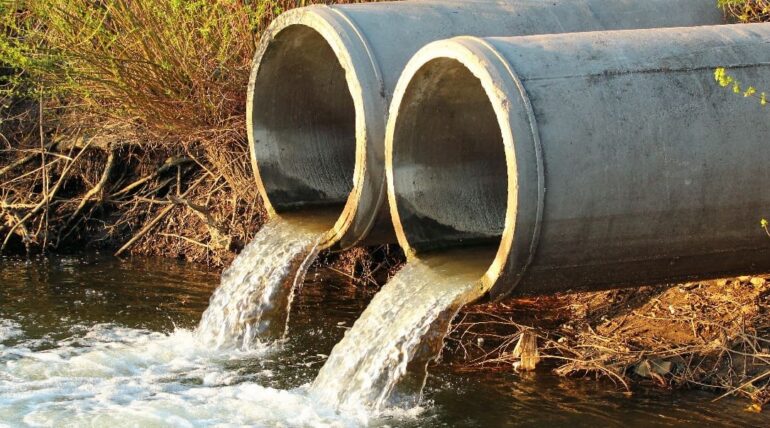
Pressure washing is a powerful way to refresh your home’s exterior, driveway, or patio—but what happens to all that dirty water filled with detergents, oils, paint chips, and gunk? 🧼🌧️
It may seem like it just vanishes into the soil or down the nearest storm drain, but improper disposal of wastewater can have serious environmental consequences—and in some areas, even legal ones. So, if you’re wondering:
“How do I properly and safely dispose of dirty water from pressure washing?”—you’re not alone.
In this guide, we’ll break down why it matters, what the risks are, and how to handle wastewater the right way whether you’re a homeowner or a professional contractor. 🌎💦
⚠️ Why Dirty Water Disposal Matters
That water running off your driveway isn’t just water. It’s often mixed with:
- Oil or grease stains
- Detergents and degreasers
- Paint or heavy metals
- Mold, algae, or mildew
- Dirt and sediment
When this contaminated runoff flows directly into storm drains, it bypasses water treatment systems and empties straight into local lakes, rivers, and oceans—polluting ecosystems and harming wildlife. 🐟☠️
💡 In many states and counties, improper disposal can result in fines or environmental violations—especially for commercial power washing.
🌀 Storm Drains vs. Sanitary Sewers: Know the Difference
Here’s the key distinction:
- Storm drains flow directly into natural waterways without filtration
- Sanitary sewers carry water to treatment plants where it’s filtered and cleaned
🚫 You should never allow dirty pressure washing water to enter a storm drain.
✅ If possible, divert it to a sanitary sewer or properly manage it on-site.
🛑 When Is Wastewater Considered Harmful?
You might think a little soap and dirt won’t hurt, but here’s when pressure washing runoff becomes an environmental hazard:
- If you’re using chemical detergents or solvents
- If you’re washing vehicles, engines, or oily surfaces
- If paint, lead, or rust flakes are present
- If mold/mildew or algae treatments are applied
- If washing occurs near storm drains, creeks, or natural runoff paths
In these cases, the wastewater should never be allowed to freely drain into the street or landscape.
✅ Safe Ways to Dispose of Pressure Washing Water
1. Capture and Collect the Runoff
Use portable water berms, vacuum recovery systems, or containment mats to trap water during cleaning. This is a common method for pros doing large-scale jobs or working near sensitive areas. 🧰💧
Captured water can then be:
- Filtered and reused
- Hauled to a wastewater disposal facility
- Discharged into a sanitary sewer (with permission)
2. Direct Water to Gravel or Grass Areas (for Mild Jobs Only)
If you’re just cleaning lightly soiled surfaces with no chemicals, it may be safe to direct runoff toward a gravel bed, garden, or soil area. This allows natural filtration through the ground.
⚠️ Don’t use this method if:
- You’re using soap or degreaser
- The surface contains oil, paint, or lead
- You’re in an area with groundwater contamination concerns
3. Use a Wet Vacuum or Recovery System
Wet vacs with a sump or filtration system can suck up excess water for disposal into a proper indoor drain or sewer cleanout. This is especially handy for interior pressure washing jobs or closed patios. 🧼🧽
4. Divert to a Sanitary Sewer (If Permitted)
Some municipalities allow wastewater to be disposed of through a designated indoor sink, utility drain, or mop sink—but always check with local authorities first. You may need a permit or to meet specific filtration requirements.
🌍 Environmentally Safe Detergents Help Too
Even with good runoff control, your choice of detergent matters:
- Choose biodegradable, non-toxic soaps
- Avoid anything with phosphates, chlorine, or petroleum-based solvents
- Look for labels that say “EPA Safer Choice” or “Storm Drain Safe”
Every little choice adds up to cleaner water downstream. 🌊💚
Browse Amazon Here For Biodegradable Pressure Washing Detergents
🛠️ Professional Responsibility
If you’re a pressure washing contractor, your local municipality may require you to:
- File a wastewater management plan
- Use containment and recovery systems
- Maintain records of disposal logs
- Use washwater filtration or treatment systems
Non-compliance can mean steep fines, business license issues, or even legal action. 📄⚖️
🧠 Final Takeaway
So, how do you dispose of dirty water from pressure washing safely?
✅ The safest options are:
- Capturing and collecting runoff
- Diverting it into a sanitary sewer (with permission)
- Using natural filtration in grass or gravel only when no chemicals are involved
🚫 Never let soapy, oily, or contaminated water enter storm drains or the street.
Protecting the environment starts right at home. With just a few extra steps, you can make sure your clean-up doesn’t create a mess somewhere else. 🌎💧💪
Browse Amazon Here For Top Rated Power Washers And Accessories






